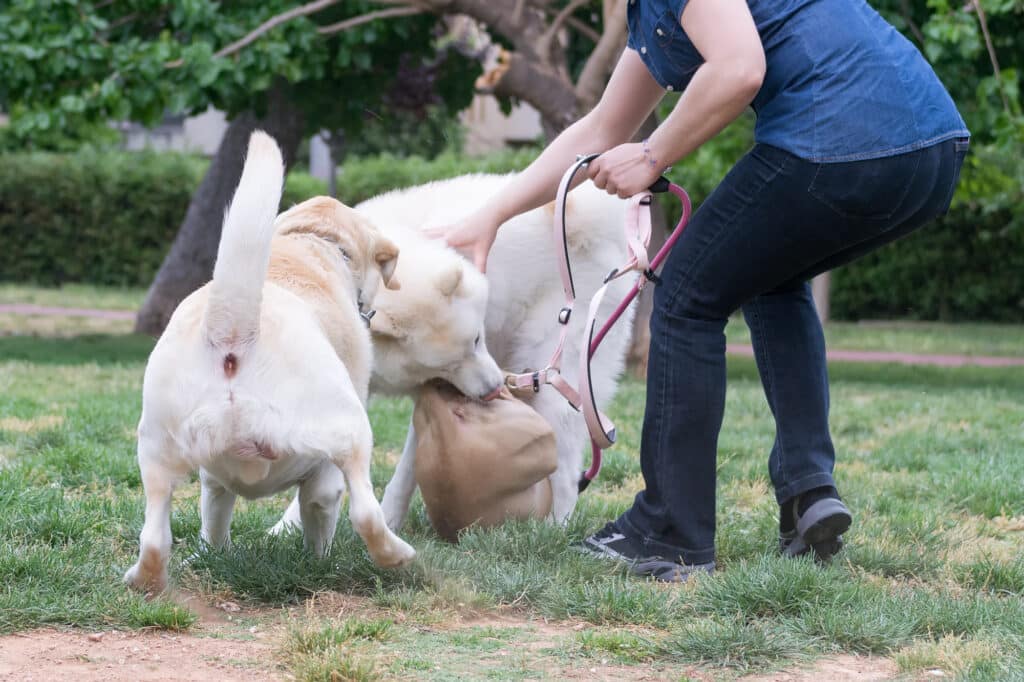
Aggressive behavior in dogs poses a danger to humans or other animals, with probable physical injury.
Many dog owners in Sacramento fail to recognize the warning signs before their dogs bite them, leading them to believe their pups have suddenly taken an uncharacteristically violent turn. But that is rarely the case: warnings often precede attacks. Dogs rarely attack without providing some form of warning beforehand.
Different Kinds of Aggression
In California, aggression is a serious matter and is one of the top reasons why dog owners seek professional help from a professional dog trainer or a local veterinarian.
Common types of dog aggression.:
Territorial
Directed to a person or animal who approaches the owner’s territory (home or owner’s property).
Possessive
Also known as “resource guarding,” is when directed toward any person or animal by dogs who sense they will take away valuable resources like food or toys from them.
Maternal or Protective
Aggression is directed toward humans or animals by female dogs protecting their puppies.
Irritable
Aggression against any individual or animal triggered by discomfort.
Redirection
Aggression that arises incidentally to another form of aggression or emotional arousal. It occurs when a dog becomes frustrated when its target cannot be reached and instead redirects his aggression to other objects, persons, and other animals.
Social Conflict-Related
Aggression towards a person or animal familiar to your pup and usually motivated by internal conflict and various social interactions.
Sexual
Aggression directed against another male or female dog. Commonly occurs during mating when male dogs compete to win over female dogs or when female dogs fight over access to male dogs.
Symptoms of Fear Aggression in Dogs
Timidity
Aggressive chewing
Lip tension
The whites of the eye turn pink or red
Ears held back
Licking nose or face (with no food present)
“Punching” with the muzzle
Excessive vocalizations
Pacing
Nipping
Tail tucked under
Holding head lower than back
Showing the whites of the eye
Exaggerated yawning
Cowering
Escape behaviors
Panting
Biting
Causes of Fear Aggression in Dogs
Developmental
Abuse and traumatized events can have more of an impact during a puppy’s developmental phase. improper early socialization can make your pup fearful of strangers and lead them down an uncertain path in later years.
Environmental
Shelters that impose confinement and overcrowding on canines may induce chronic fear and lead to aggression.
Genetic
Certain breeds of dogs may inherit predispositions for fear and more susceptible to aggression due to fear.
Physical Disorders
Physical disorders that cause chronic pain can often trigger fear-driven aggression in canines.
Treatment of Fear Aggression in Dogs
Treating fear-induced aggression should involve working in cooperation between their owners and an accredited trainer



